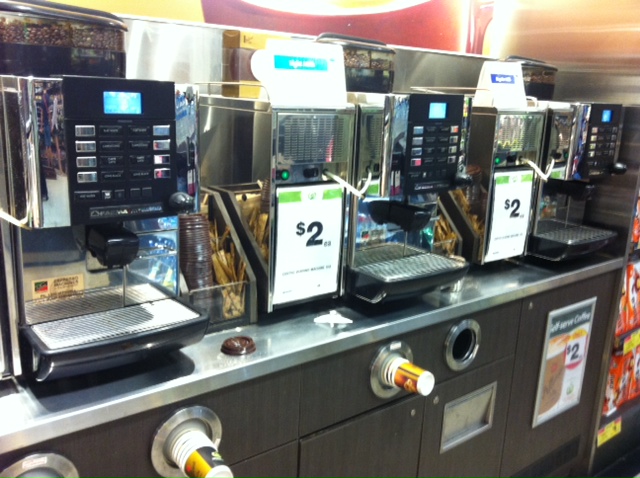I noticed the queues one morning when calling into the local service station to grab a carton of milk at 5am.
There was a line of tradesmen out the door waiting to buy a $1 self serve coffee. Freshly ground with your choice of espresso, latte or cappuccino.
No messing around, no being patronised by snobby barista – just a cheap, decent quality cup of coffee.
For the last few years these machines have been popping up in convenience stores and service stations, freshly grinding beans to order and delivering a reasonable cup of coffee for a dollar or two.

None of the machine made cups will beat a coffee made by a good barista, but are half or a third of the price being charged by many cafes whose product often isn’t much better (and sometimes worse) than that made by the machines.
With the rise of the service economy in the 1970s it was assumed employment would move from factories to jobs like baristas and serving in cafes, now we’re seeing automation taking over those jobs as well.
The 1970s assumption that the service industries would become the mainstay of the economy turned out to be true with over two thirds of the workforces in countries like the US, UK and Australian employed in them them by the end of the Twentieth Century.
Now industries are restructuring again and the assumptions that worked well for the last fifty years are being challenged by automation and increased outsourcing.
The idea we could build an economy based upon us all making coffee and waiting tables for each other was always problematic and so it is proving to be.
It’s worth thinking about the opportunities this presents for your business.

Leave a Reply